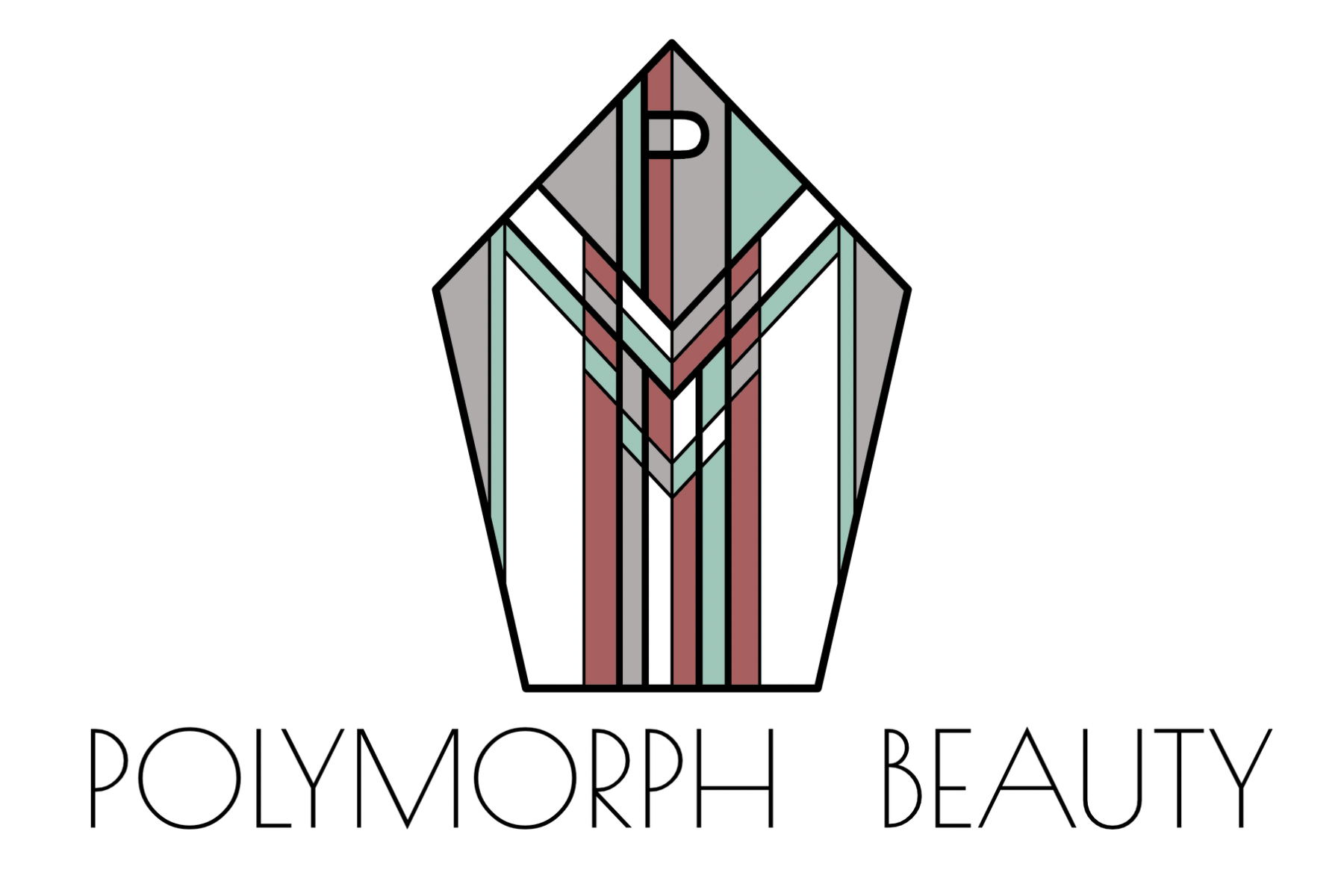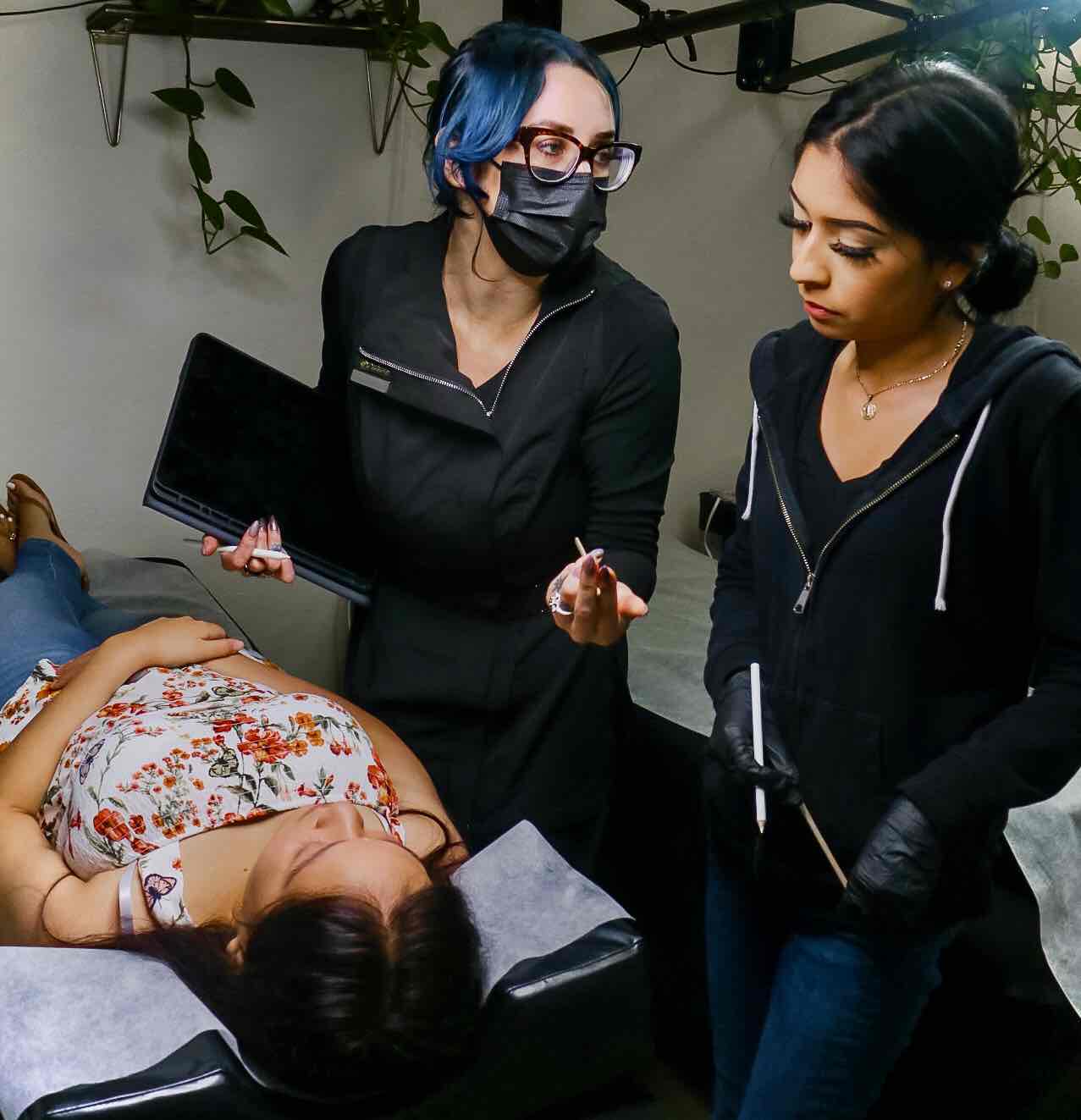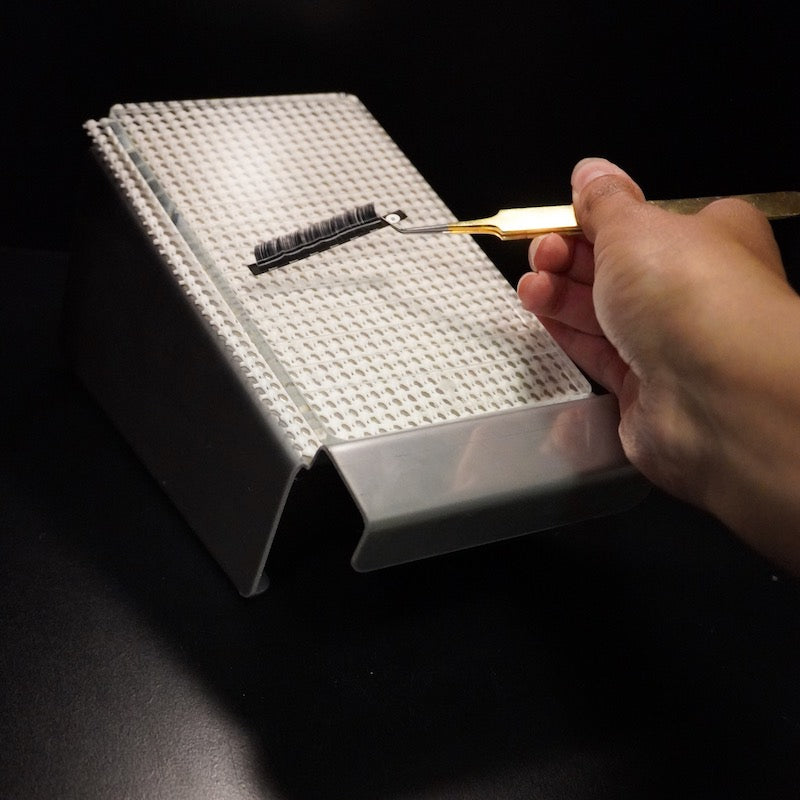hair porosity
So, we are all professionals, right? Well, most of us as lash artists/brow technicians went to some type of cosmetology school in order to become certified and licensed practitioners. We learned about basic skin histology, we studied the basic muscular and bone systems... we learned to apply and remove our wax from the correct direction and angles. But most of us don't use scientific or medical terms on the regular, our jobs are to make our clients look and feel beautiful, not to explain how we do it, right? Deary me, I hope not.
We often forget the most important fact of all- Hair IS a modified skin tissue. Hair is a keratinous filament growing out of the epidermis. It is primarily made of dead, keratinized cells. Strands of hair originate in an epidermal penetration of the dermis called the hair follicle. In essence, skin and hair are keratinized cells. They may have different ph, but they are very much the same.
So why is this important for us to know?
Understanding how skin and hair absorb elements, what they are made up of, and how they are broken down can make or break our services. We have a responsibility to be able to properly assess the state of skin and hair in order to deem whether we have a good candidate for a service. Understanding desquamation and growth cycles can be the difference between a gorgeous result or an over processed client. Being able to spot compromised skin or hair is an important part of our jobs.
So there is the basic idea behind the importance of knowing skin and hair histology, but there are a few other things to keep in mind when assessing the state of hair and skin.
Not all skin or hair is the same. Porosity can change how chemicals and heat are absorbed, or make it more difficult to achieve a desired result. Your skin is the largest organ of your body and since it is porous, it absorbs whatever you put on it. A study published in the American Journal of Public Health looked into the skin's absorption rates of chemicals found in drinking water. It showed that the skin absorbed an average of 64% of total contaminant dosage.
Hair is much like a sponge, capable of absorbing water and other substances from the environment; it is also susceptible to losing precious moisture and lipids to the environment. Maintaining an optimal balance of moisture in your hair preserves its elasticity.

Low Porosity
Hair described as having low porosity is characterized by a tightly bound cuticle layer where the individual cuticle scales lie flat and overlap one another. Low porosity hair is considered to be quite shiny, especially if it is a darker color. This porosity is considered to be healthy. If your hair repels water when you attempt to wet it, that is a good indication that it has low porosity. It is difficult to chemically process because of its resistance to penetration. It is prone to an excessive accumulation of protein if deep conditioning products are used, and feels stiff and straw-like. If hair with very few or very small openings becomes dry for some reason, it can be difficult to restore the proper moisture balance to it. In this case, a deep conditioning treatment with moderate heat would be a good way to ensure the cuticle is sufficiently opened up to allow moisture to enter into the cortex.
Normal/Medium Porosity
Hair possessing to hair with this level of porosity generally requires the least amount of maintenance.
Normal porosity hair allows moisture to pass into the cortex as needed, but resists permitting too much water to penetrate. Repeated works by various research groups have found that healthy hair of average porosity can absorb water up to a maximum of 31.1% by weight. Normal porosity hair has a tendency to hold styles well. Perming or coloring can be done in a predictable manner, following the usual guidelines of the product. However, these processes will damage the hair and increase its porosity over time. An occasional deep conditioning treatment with a protein-containing product will be of benefit, but proteins should not be included in the daily regimen. If a protein based product is over used, (such as KERATIN) it can cause the hair to overload on protein, resulting in dry, brittle, and easily broken hair.
High Porosity
Chemical processes, harsh treatment, and environmental exposure are all responsible for causing cumulative, irreversible damage to the cuticle layer. High porosity is a result of damage to the hair that creates gaps and holes in the surface of the shaft. Hair with this type of uneven, pitted and rough surface is prone to damage resulting in a cascade of effects that culminate in unmanageable and unlovely locks.
Hair with a great deal of porosity has been found to be capable of absorbing significantly higher amounts of water than hair or normal or low porosity (up to 55%, in contrast with 31.1% for healthy hair). Excessive absorption of water from the atmosphere causes frizz and tangling on humid days. High porosity curls require products that are rich in moisture and emollients; they also benefit most from products that contain humectants that attract and retain moisture to the hair. Total immersion of high porosity hair during bathing, swimming, or shampooing can lead to significant breakage due to loss of elasticity from the sheer weight of the water absorbed. It also takes on color much more quickly and in higher concentrations than normal porosity hair when undergoing a chemical color process.
Each of these porosity types require different care, and different approaches when it comes to our services. This information will give you the extra confidence to take on any lash or brow client that come through your door.



